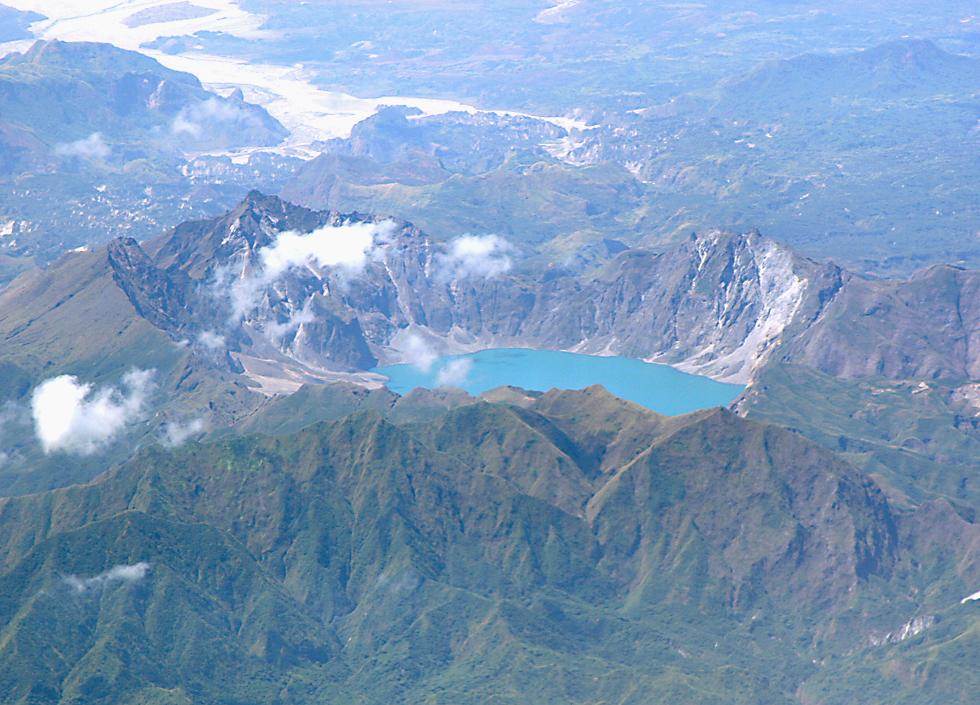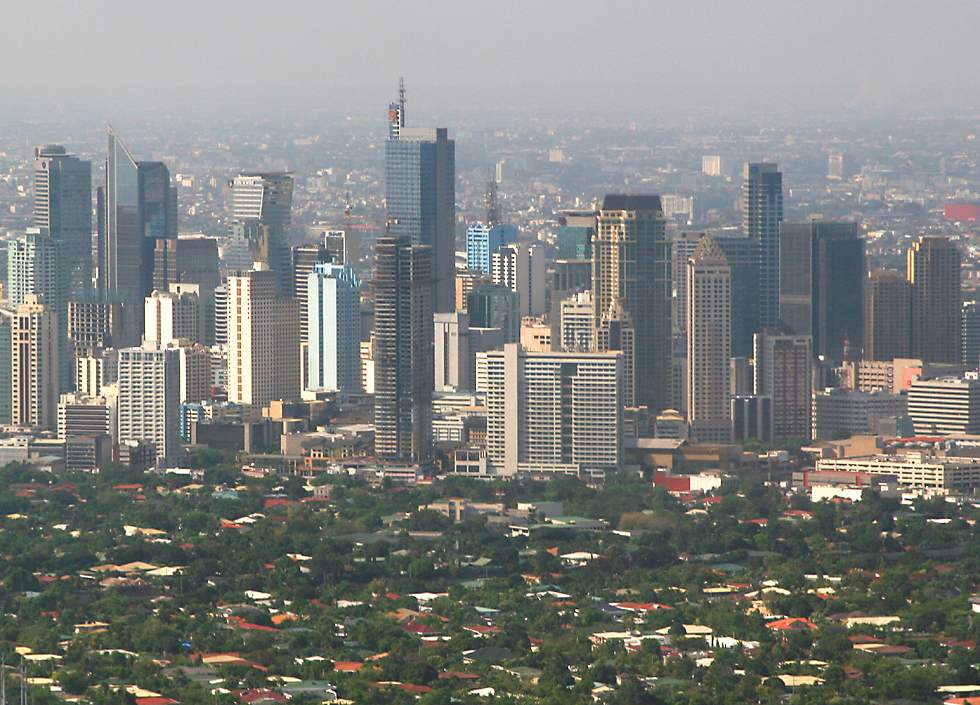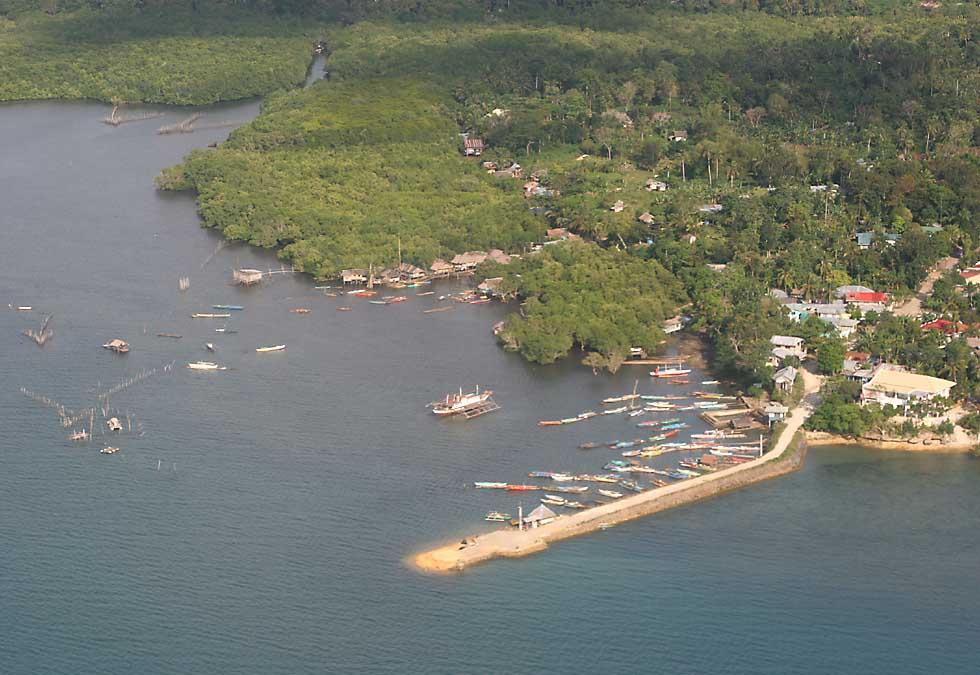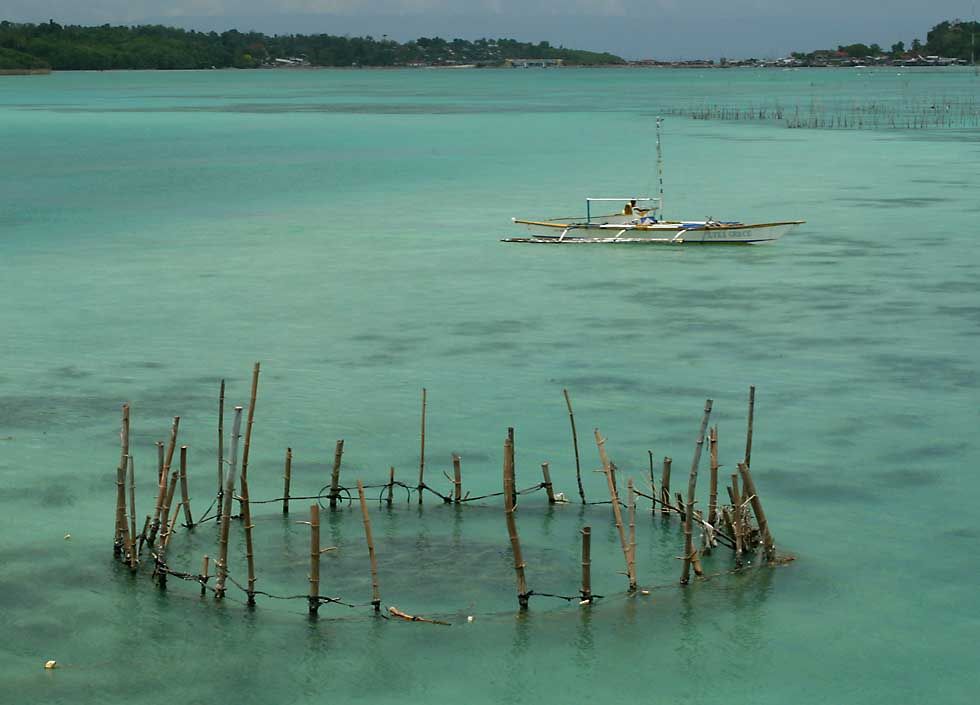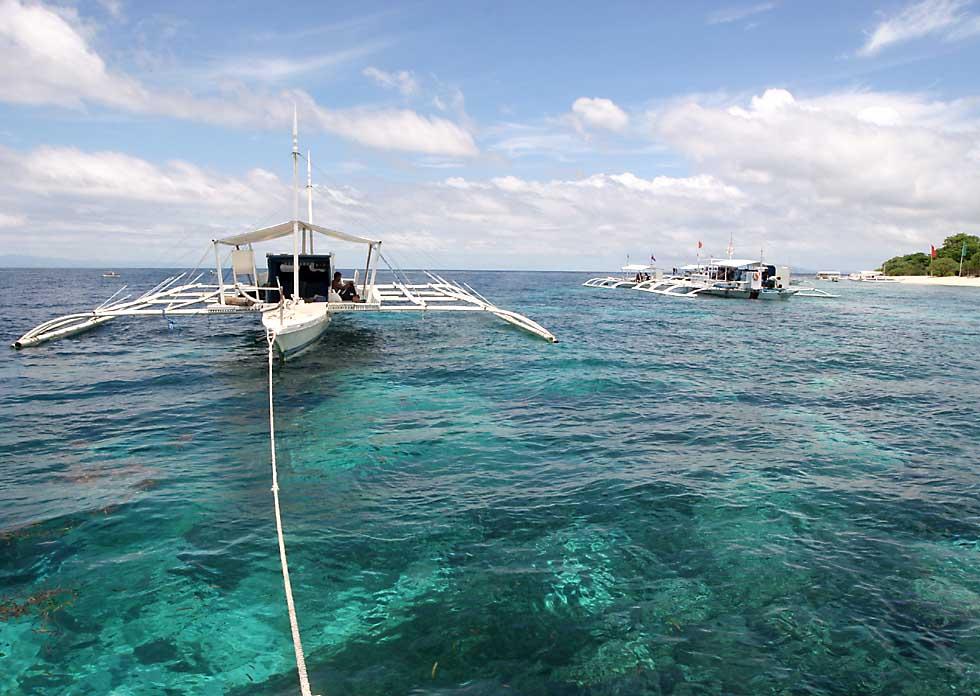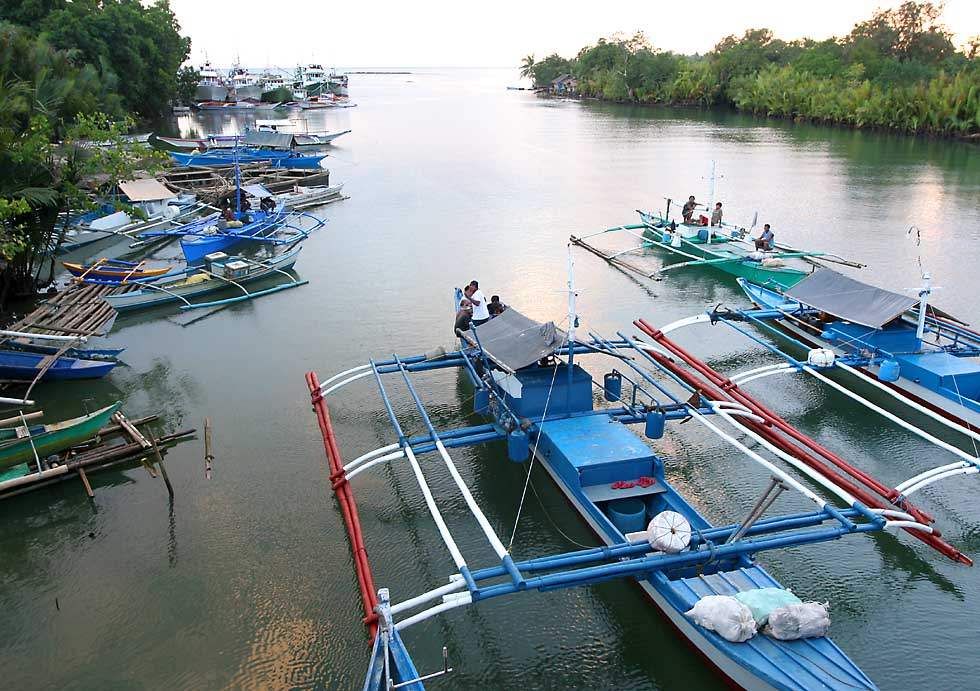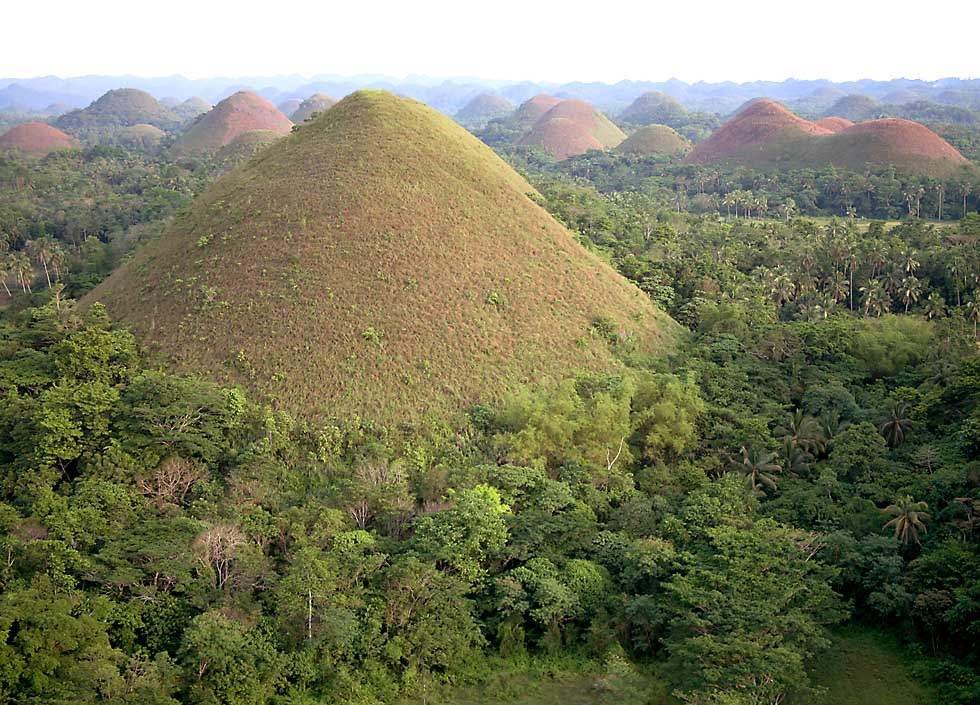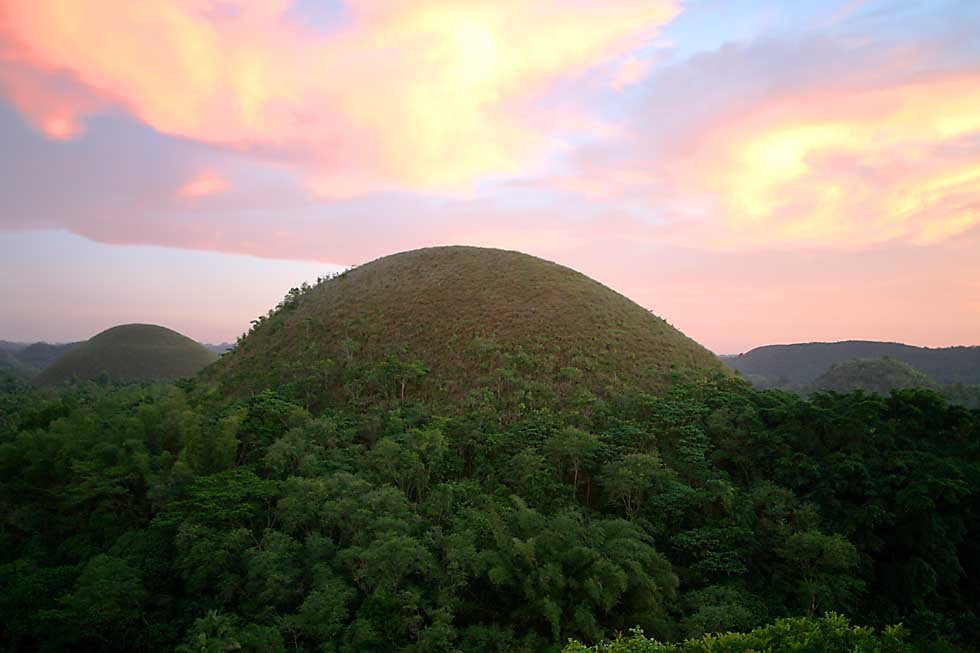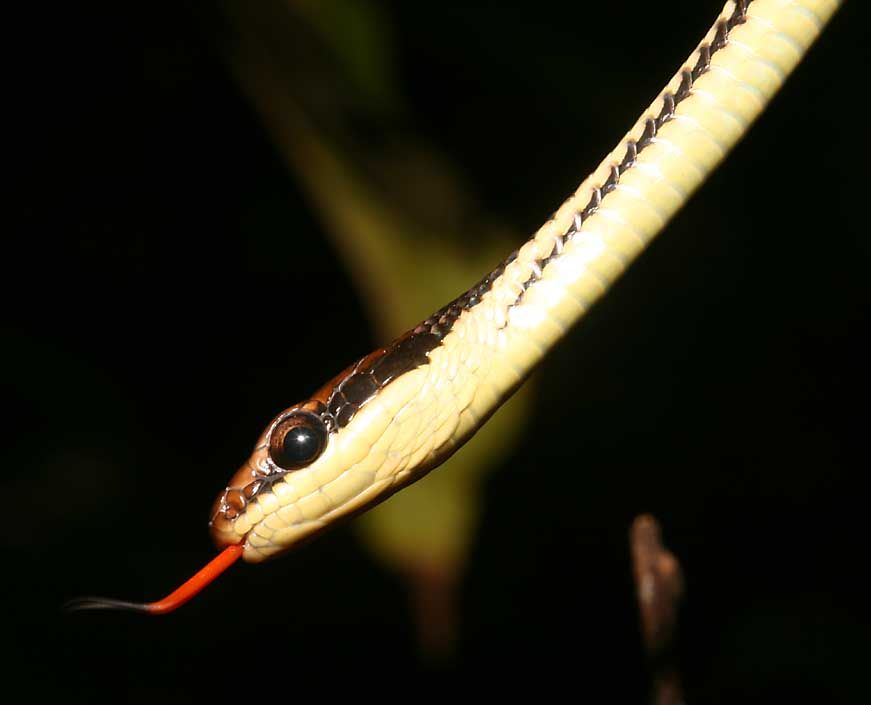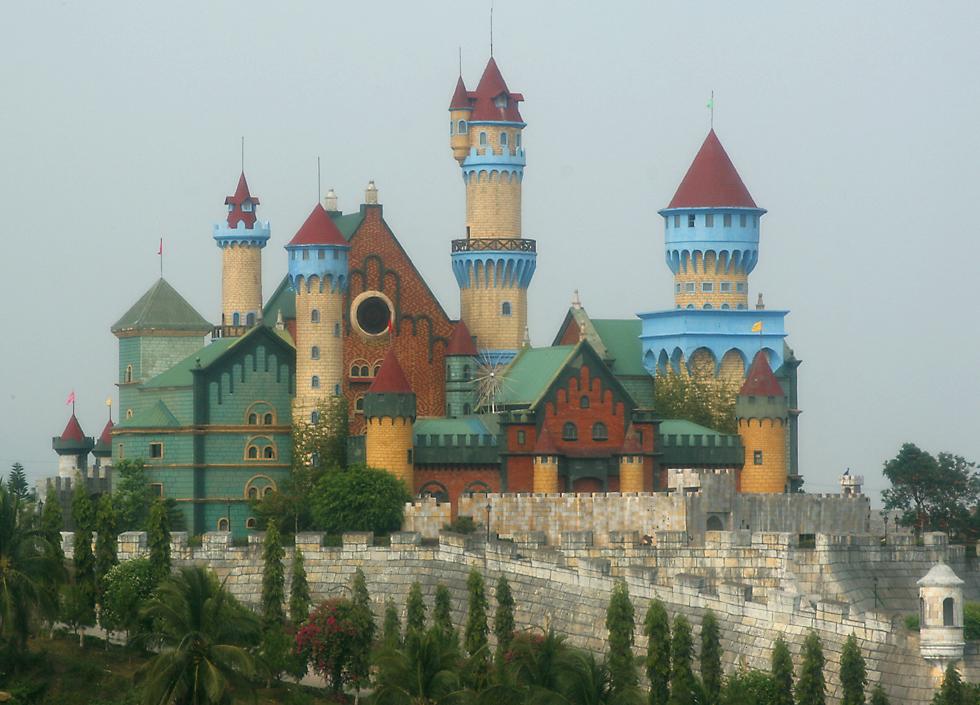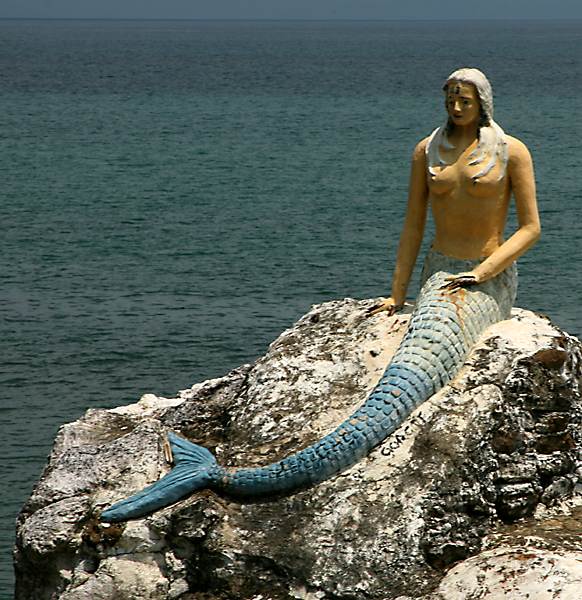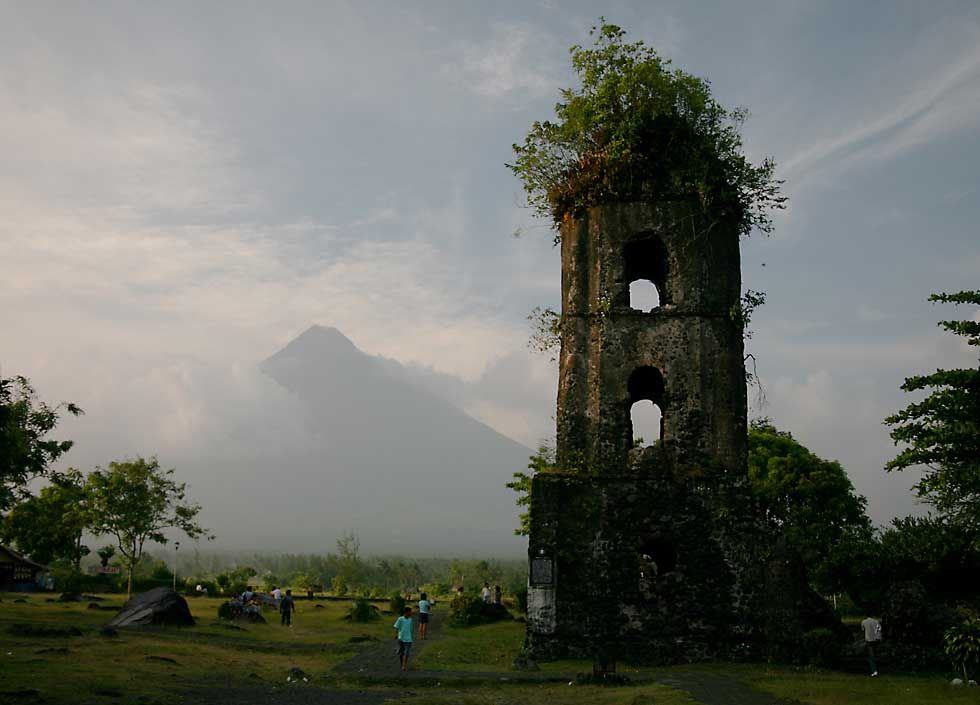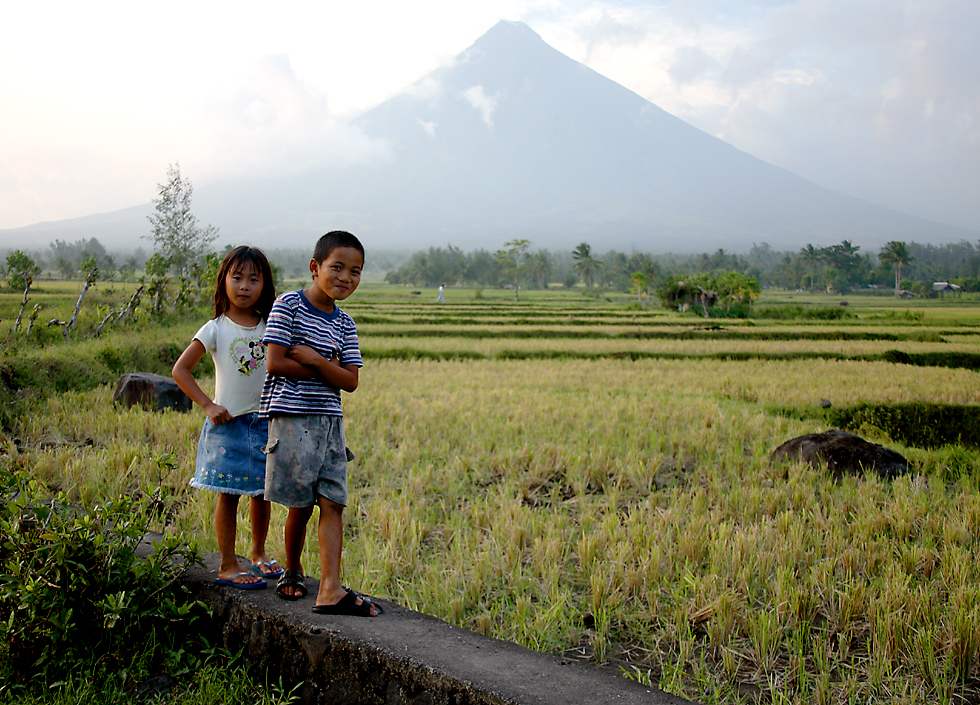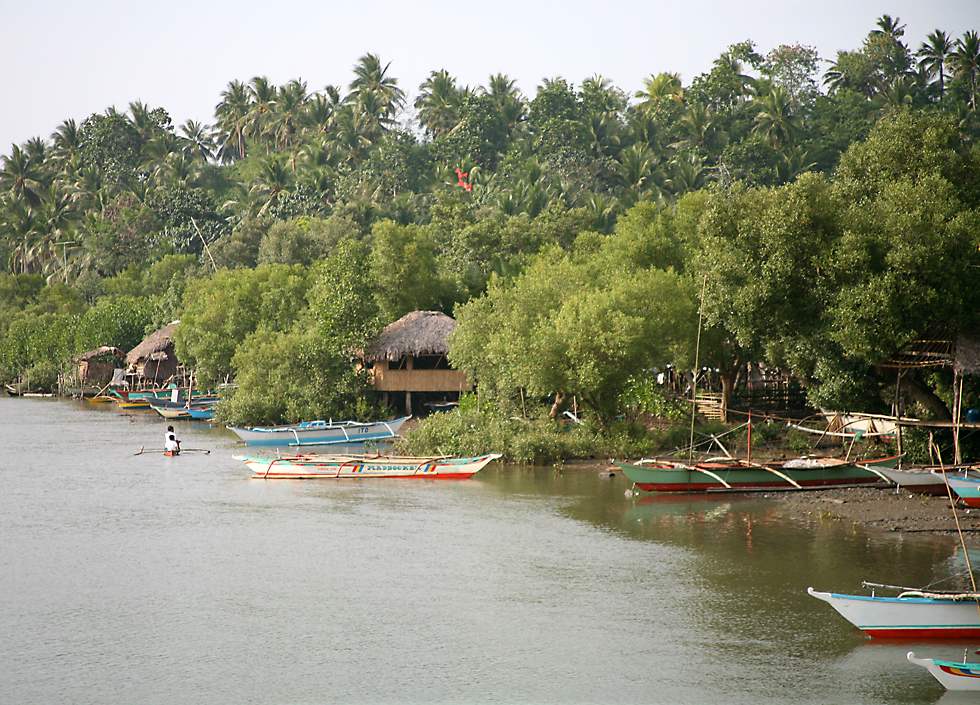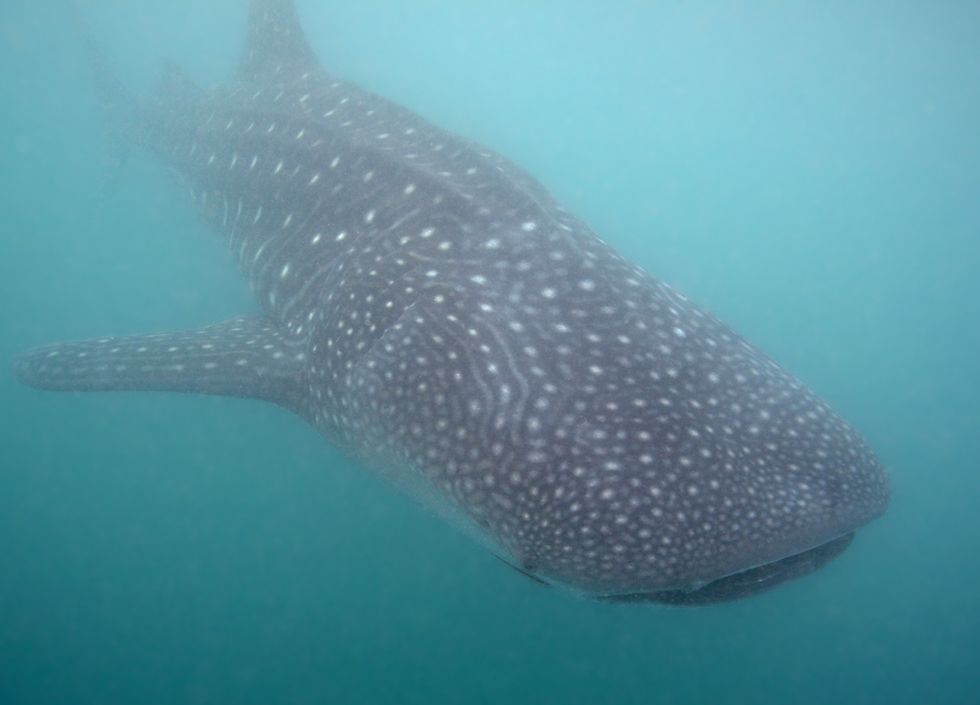Highlights of the Philippine Islands
|
Hundreds of thousands of people live in squalid conditions in Manila's slums, ekeing out a living within sight of the mansions owned by members of the plutocracy. |

|
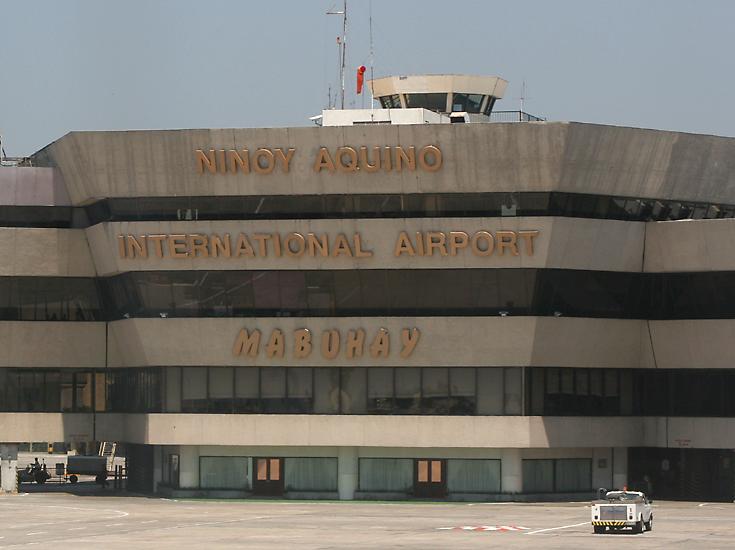
During the reign of the late and largely unlamented Ferdinand Marcos, the moneyed classes prospered while the ordinary people languished in poverty. Even though "people power" brought about a change of government in 1986, many people complain that little has changed. The new airport terminal is named after the opposition leader who was assasinated on this very tarmac by Marcos' hitmen, but many people say that the new airport itself is an excellent example of the sort of nepotism and corruption that plagues the country. Thankfully tourists in the Philippines are unlikely to be affected by this corruption, something which isn't true of every country. |
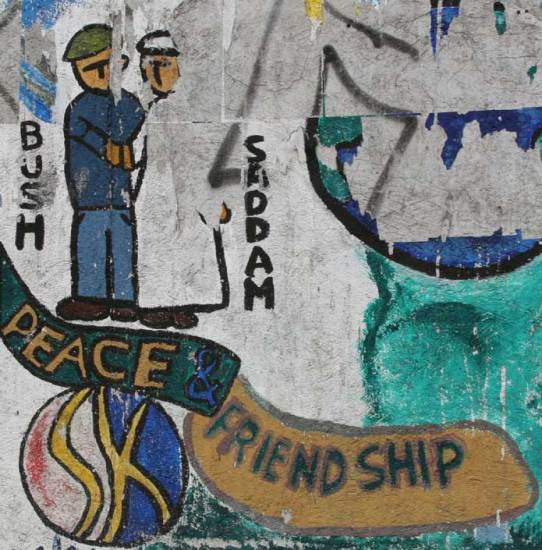
Indeed, ordinary Filipinos have a touching and somewhat naive notion of how close the world might be to a massive outpouring of love and forgiveness at all levels, as illustrated by this mural of George Bush and Saddam Hussein. Recent history, in particular the demise of Mr Hussein, dictates the need for updates to the mural, but the thought is certainly nice, and most people will find the locals friendly. |

I originally planned to spend one or two days taking in the pleasures of Manila, but in the end I didn't spend a single night there, and the only place I visited was the Philippines Air Force Museum, which is just outside the main international airport. Of course this museum isn't likely to be high on many tourists' lists of "must see" destinations, but it does fit in nicely with my fascination with airshows and aviation museums. What I foolishly hadn't counted on was that the museum, which is just inside a military base, was closed on the day turned up on the door, because it was Sunday. Even though the museum is on the perimeter of the airport, it isn't entirely easy to find, but I'd hired one of the guys at the rental car dropoff location to take me there, and he was able to ask around and find it (actually the only way I'd even found the airport and the rental car place was by picking some random guy off the street and offering him a couple of hundred pesos to show me the way!). As I mentioned, the museum was closed but after knocking on the museum annex door across the street we roused one of the air force guys and he was generous enough to take us in and show us around the interesting collection of aircraft. Most of the aircraft won't interest most of the people visiting this page, but here's one which will. This is the dressing room of Imelda Marcos (she of the shoe fetish) which is at the back of the presidential transport aircraft, the Philippines equivalent of Air Force One. The aircraft was locked but the steward again took the time and effort, unbidden by me, to open it up and invite me up to look around and take photos. |
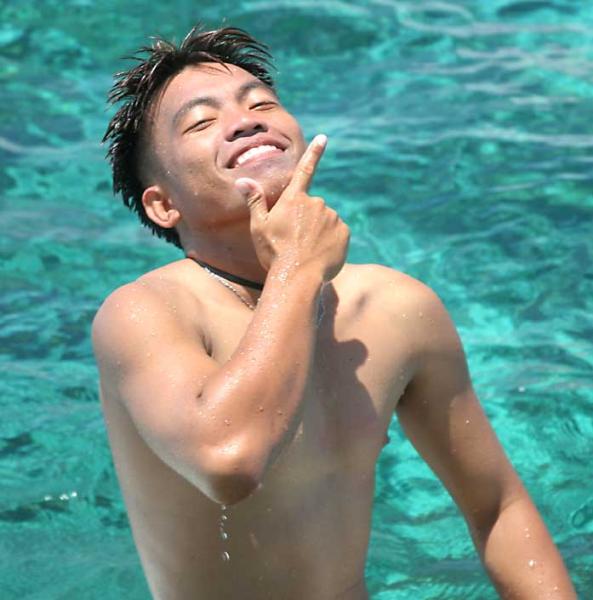
Here's one of the helpful boatmen who takes tourists across to Balicasag and provides able assistance with dive gear. In spite of chronic unemployment, most locals are very friendly towards the wealthy tourists who descend on their islands, and I never got the feeling that I was being ripped off or that I needed to fear violence. Of course, as always it makes sense to be aware of your belongings and not to let too much temptation lie in people's path, but I had entirely good experiences with all of the people I met during my two week stay. |
|
Something rather unexpected and money sapping did happen while I was staying at Panglao, however. I've been free-diving with a weight belt and camera for over ten years now, but this was my first trip with a housed underwater SLR camera. While I was there I made several trips with various scuba divers using much less sophisticated systems, and so I finally took the literal and figurative plunge and learned to scuba dive, something I'd put off for quite a few years. I'm glad that I did, since diving opens up a lot of opportunities not available to a free-diver like myself with a depth limit of less than ten meters. You can see the results for yourself on this page of Underwater Highlights of the Philippines, and a page of Sea Slugs of the Philippines, where you'll find beauties like this Chromodoris magnifica. |
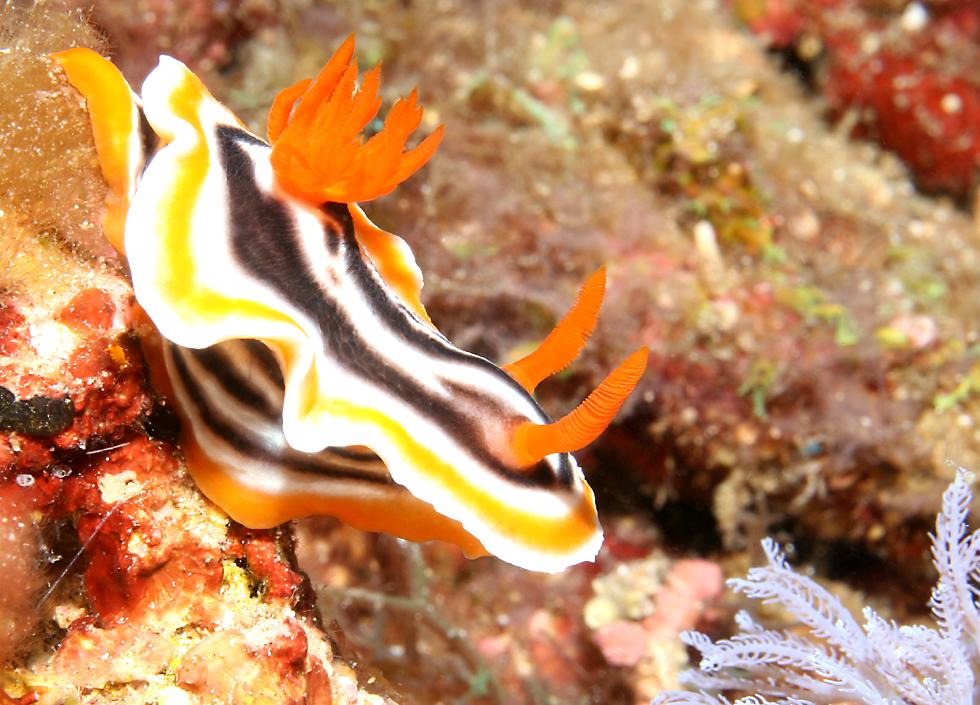
|
|
The fishermen aren't the only ones who might take a passing interest in you, though in this case I'm not sure if this water buffalo is more interested in me or that plant growing in its water hole. |
 |
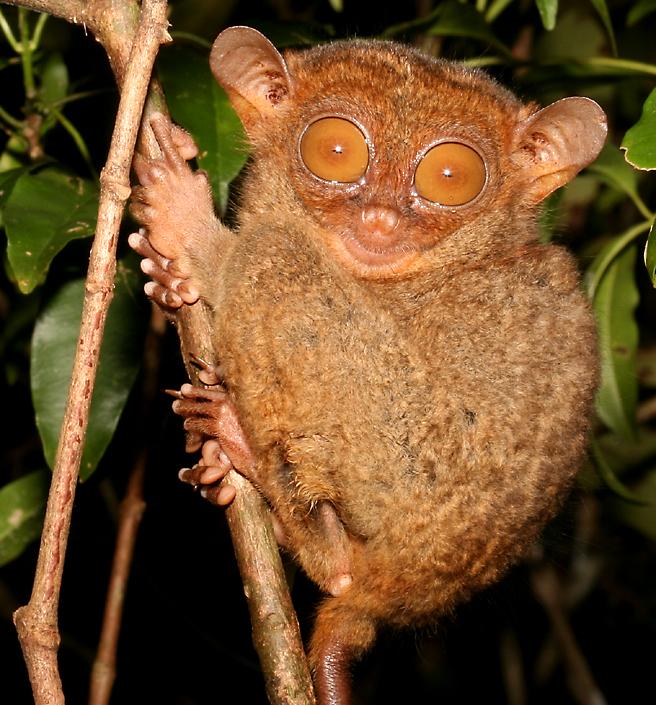
The biggest downside of learning to scuba dive, apart from the money it costs, is the time that it takes. Normally I like to split my time in a country between underwater and above water pursuits, but I ended up spending almost all my time doing classwork, pool exercises and actual dives. This is the first trip I've made in several years where I didn't photograph a single butterfly, so you'll just have to get your lepidopteral fix from the butterflies of Vietnam page. As you've seen, I did make time to visit the Chocolate Hills, and on the same day I visited the Tarsier Visitors' Center near the town of Corella, which is vaguely on the way to the Chocolate Hills anyway, though when I came to cross the Loboc River I discovered that the one and only bridge at Loboc itself was out of commission, which meant that I had to make a 10 or 15 kilometer long detour down to the coast road and then back inland. It's possible to see tarsiers by taking a boat trip from Loboc, but these are illegally captured animals which are just used to extract tourist dollars without any concern for conservation. In contrast, the Tarsier Visitors' Center keeps these extraordinary little critters in a natural jungle habitat and has a breeding program to try to keep them on the right side of extinction. There are only around 1000 left on Bohol, which is a shame, since they've been around for approximately 45 million years. Philippine tarsiers are certainly extraordinary animals and very photogenic, as you can see. They're one of the world's smallest primates, adults can easily fit on a person's hand, but they're able to jump a distance of three or four meters while moving from tree to tree. The strange pads you can see on their feet help them to hold on to branches, and some of their toes have sharp claws which are used for grooming. They're nocturnal and have the largest eyes of any mammal relative to their body size, but their eyes are so far forward that they must turn their heads to look around, something they've become very good at - their necks have developed in such a way that they can turn their heads a full 180 degrees! |
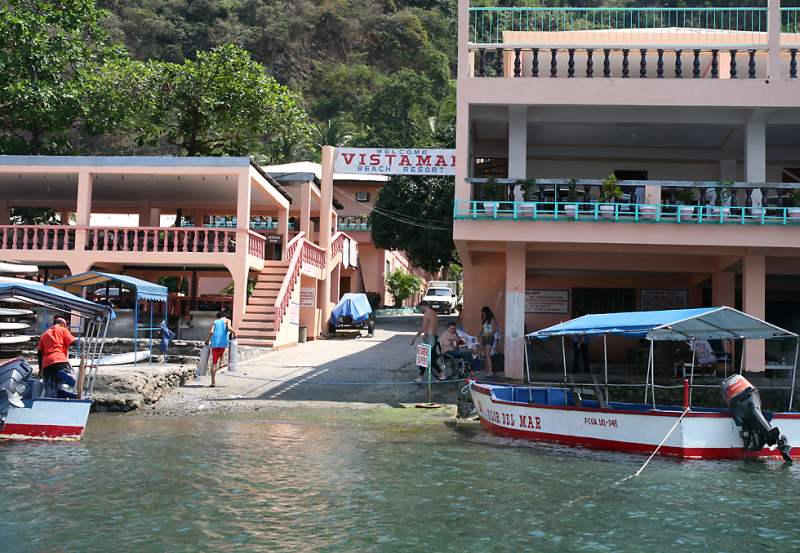
The time I spent learning to scuba dive didn't just cut into my wildlife photography time, it also meant that I stayed longer than I originally intended on Bohol, and so I didn't have time to carry out my original plan of visiting the magnificent rice terraces of northern Luzon, the main island of the Philippines where Manila is located. I did make time to go to Anilao, one of the best diving places in the country and certainly the most accessible from Manila, just a few hours' drive to the south. I stayed here for three or four days, diving several times a day as well as at night, bringing my total number of dives in the Philippines up to 15. |

I rented a car both on Bohol and on Luzon. The Philippines has a typical south-east Asian style of driving, which means that road rules are secondary, driving where you shouldn't is fine if it's what you want to do, and you use your horn frequently to let other drivers know where you are, rather than to express your opinion of them. It's not for the faint-hearted, but if you're able to maintain a relaxed attitude and you've seen how it works then it's certainly doable. The Philippines added a few twists to the mix, the first being a tendency to drive with their headlights on high-beam at night, even with traffic coming towards them. This is quite a contrast with other countries in the region, where drivers usually leave their lights off at night, only flashing them on briefly when opposing traffic comes barrelling towards them. If you're lucky then people will leave their parking lights on when they've driving at night, but somehow they've decided that you shouldn't keep your headlights on. I'm not sure if that's out of consideration for pedestrians, or perhaps there's a cultural fallacy that you wear out your lights by using them. Anyway, the Philippines is different in this regard, which led to a most unfortunate situation for me. After leaving Anilao I drove to the far south-eastern corner of Luzon, a journey of about 10 or 12 hours. I decided to take a shortcut between Calauag and Sipocot rather than using the main highway. The distance using the shortcut was about 60 kilometers, but I was doing the trip at night and with rain pouring down. Throw oncoming buses and trucks into the mix with headlights blazing on high beam, and unexpected roadworks along sections of the road, and disaster was fairly inevitable. Actually, disaster was only inevitable because the roadworks weren't marked by anything more than dirt and branches! By the time I saw the dirt heap it was already too late, and my little rental car jumped into the air and landed hard, eventually straddling the new strip of concrete and the water-filled, knee-deep ditch beside it. The bottom of the car scraped along the edge of the concrete until I came to a stop and I realized that I was stuck in this isolated location until morning. Or was I? To my surprise I found that the car still moved when I started it up, and by steering the left side wheels out of the ditch and onto the dirt road I was able to move forward until I got to a spot where I could get off the concrete strip. Hoorah! I was able to keep going to my destination, driving somewhat more slowly this time, I photographed the fateful spot when I drove back to Manila a few days later, and best of all the rental car agency never realized what happened! |
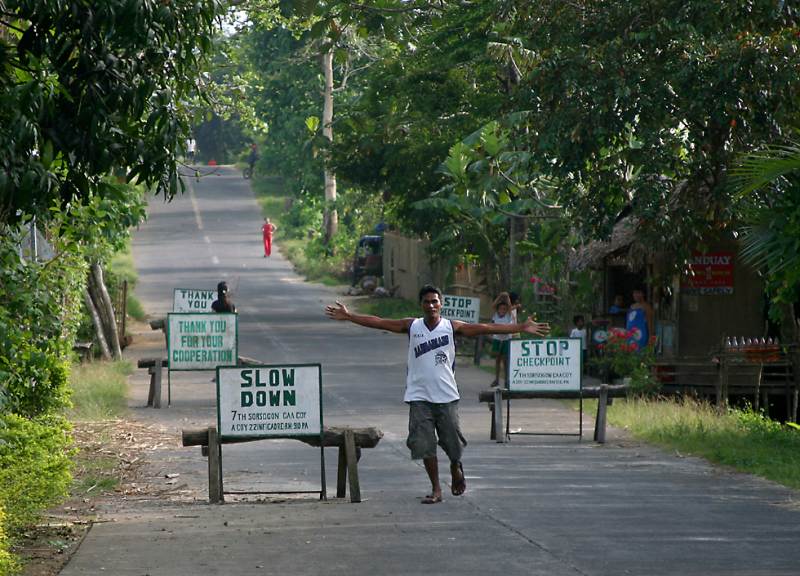
Not that there weren't plenty of other opportunities to encounter the sharp end of vehicular reality, like these slalom courses which seemed to be designed to slow down traffic as it went through small villages. In addition there were plenty of store signs jutting into the road, crops laid out to dry on the tarmac, and livestock enjoying the view in the middle of the street. |
|
Moving further east, here are some kids playing in a river while their mothers were washing clothes downstream. |
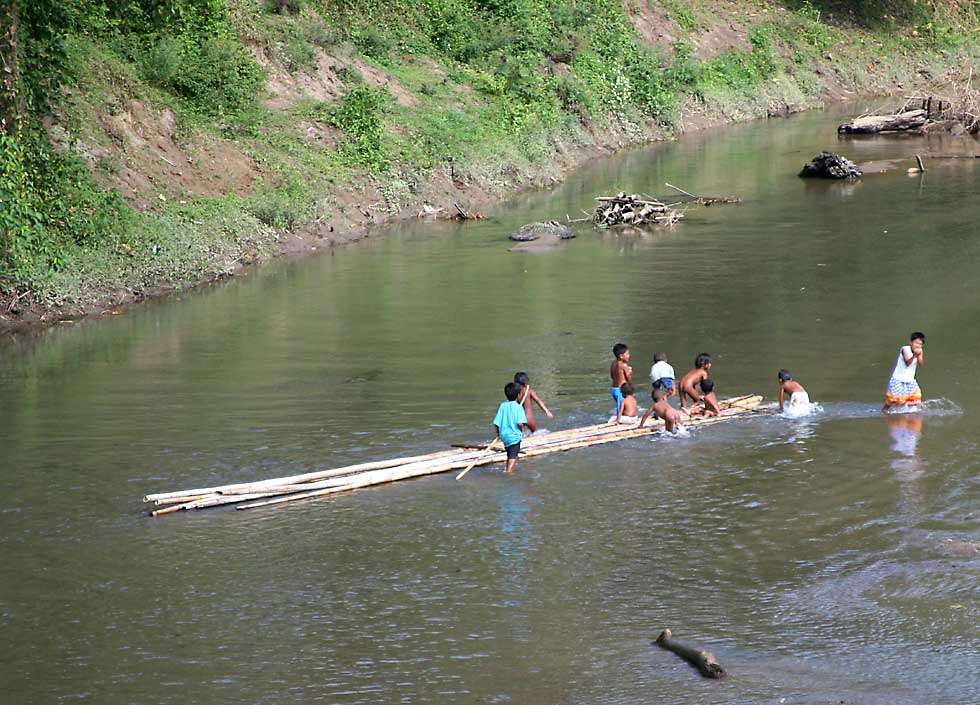 |
|
It's also a great place to view the volcano, with attractive rice paddies on the rich volcanic soil and an unobstructed view to the source of all of that fertility and destruction. |
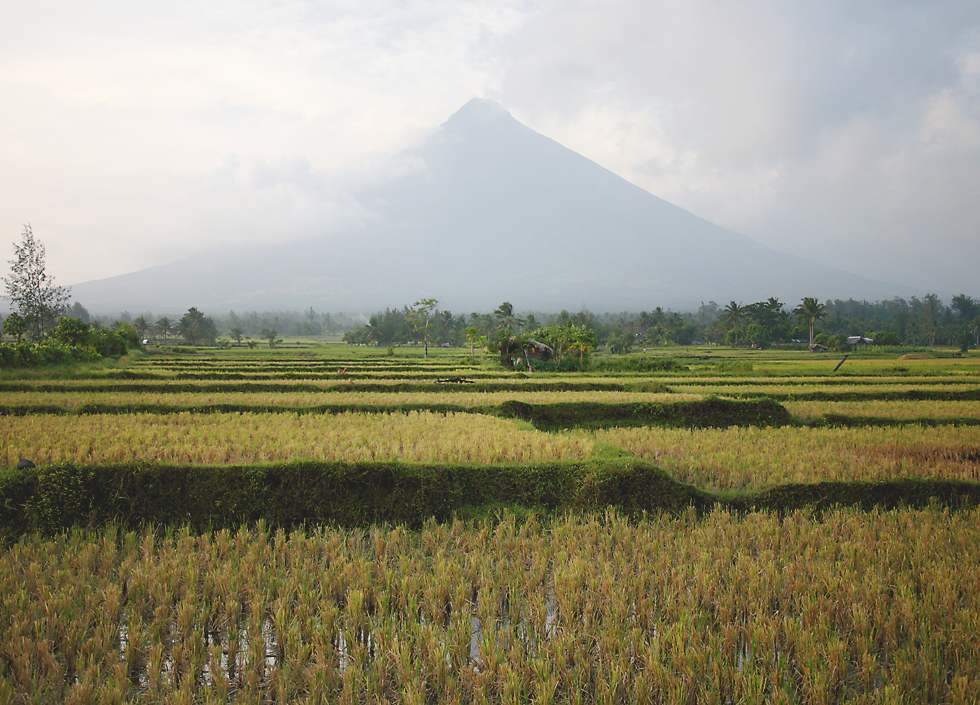
|
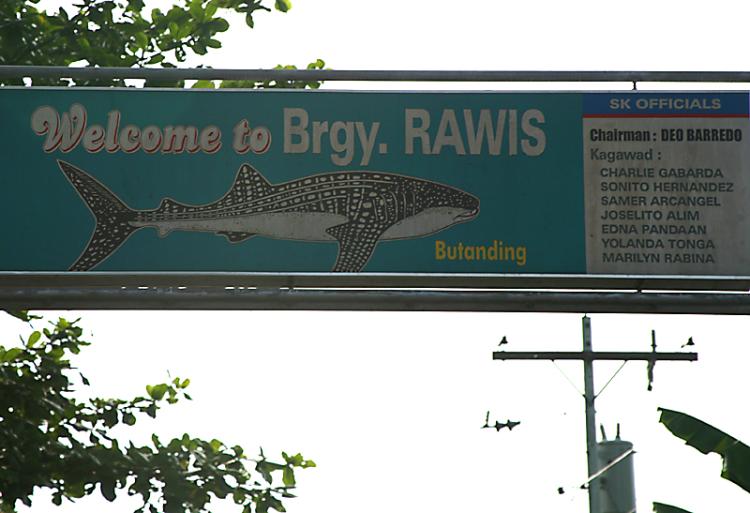
It wasn't Mt Mayon, Lake Taal or the mermaid which brought me to this part of the country, instead it was a fish. A very big fish. In fact, the biggest fish. About 30 kilometers south of Legaspi is the town of Donsol, which until 1998 was an insignificant dot on the map at the end of a dead-end road. |
